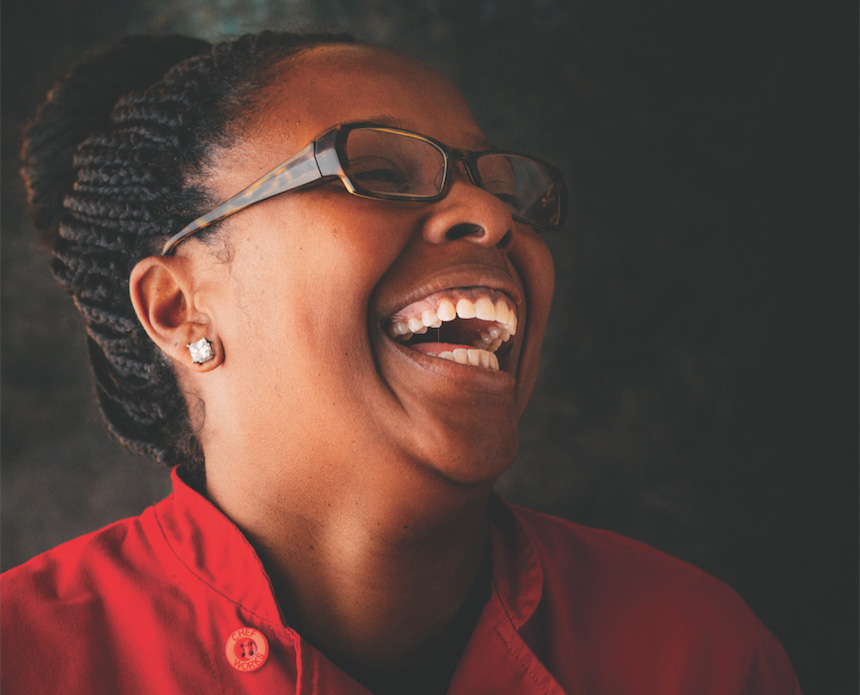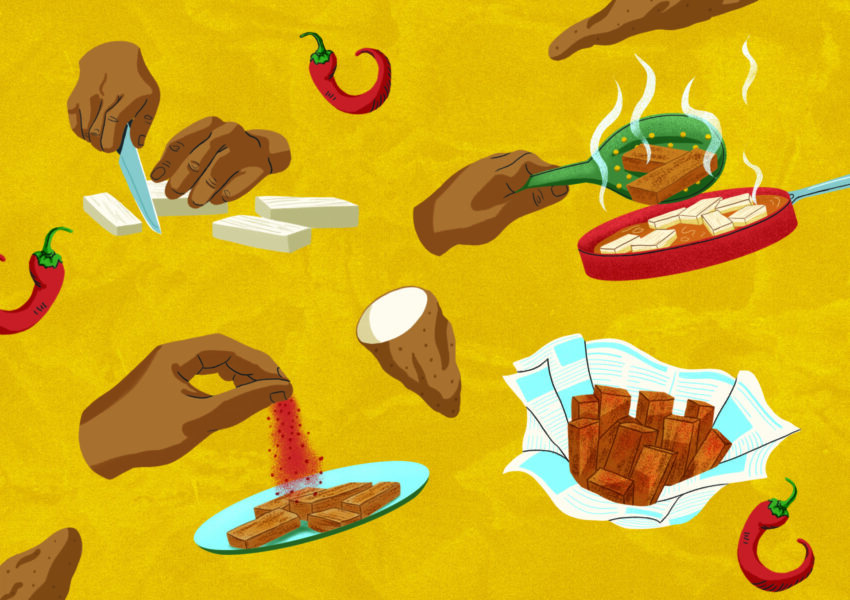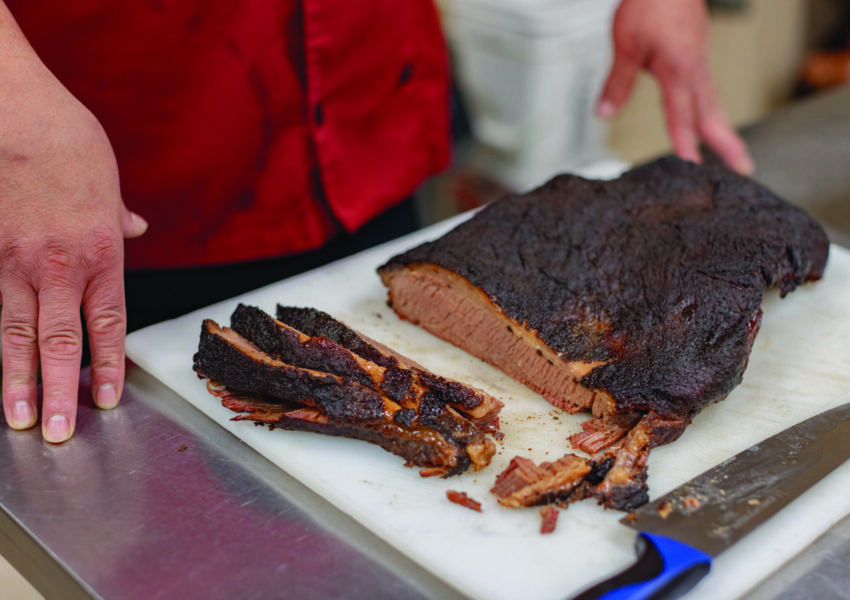From Fillmore with Love Fernay McPherson drives a Soul Movement
By Leticia Landa and Caleb Zigas
In 1961, when Fernay’s mom, Loretta, stepped off the Greyhound bus after a three-day ride from Port Arthur, Texas, escaping the sticky heat of the South, Fernay’s grandmother, Lillie Bell Riley, served fried chicken and pound cake to welcome her to foggy San Francisco. That wave of the Great Migration is long gone, but you can find its legacy still.
Fernay was born at Kaiser Hospital on Geary Street in 1977, the year Ella Hill Hutch was elected as the first female African American city supervisor in San Francisco, a year before Jim Jones’s Fillmore Street utopian dream disintegrated, a time when African Americans made up 13 percent of the city’s population.
By 1979, San Francisco’s redevelopment agency was nearly finished bulldozing through the most vital parts of the Western Addition and Fillmore neighborhoods. The bulldozers erased 2,500 Victorian homes, displaced 4,729 households, and led to the closure of well over 800 businesses in the core of San Francisco’s black community.
The 22 Muni bus runs the length of Fillmore Street. It passes by Fernay’s family home on McAllister. In that proudly purchased home, Fernay’s mother served barbecued meatballs and Pace Picante–laced spaghetti, then popular products in a modern woman’s kitchen. But it’s the mac and cheese that Fernay remembers most from those days; that’s what her mother would bring to parties.
“The whole hood would come out to the block parties,” Fernay remembers. You might have caught Fernay getting low with the Get Low, rocking a “Fillmore Kickin’ It” T-shirt while JD Walker cooked ribs in between DJ sets. Farther south on Fillmore, the 22 passes the former site of Virgo’s, a black-owned convenience store that served as community center and the center of Fernay’s childhood world. At Virgo’s, you could get anything from hot links to Kool-Aid pickles, and if they knew you well enough, they’d let you pay on credit. Everyone in the neighborhood knew Fernay. She was that hustle-harder type, selling enough Betty Crocker cupcakes to fund a bowling trip for school in her crisp white tees and Girbaud jeans—never knockoffs.
The 14 Mission is another city-lifeblood bus, and Fernay drove it for a couple of years, a municipal employee just like her parents before her. While the Fillmore was being torn down, downtown was getting built up. You can get on the 14 near the Embarcadero waterfront, head through the Financial District’s towers of capitalism and into stretches of a drug-plagued South of Market. The route winds through the Mission itself, from 16th Street all the way to 24th Street, through sometimes still-contested gang areas, to Fernay’s high school, Mission High, and then past the city border and into Daly City.Driving that route, Fernay got all the beauty, the bounty, the banality, and the downright insanity of city living, distilled into a forty-five-minute ride. To take that journey is to know San Francisco—its streets and its demons. Fernay smiles when she thinks about it. “It’s not an easy job.”

When she wasn’t driving in the Mission, she was cooking in the Fillmore. In 1981, the city built the Ella Hill Hutch Center, a community space that replaced the courts right outside Fernay’s house. When the Center, or the hood, needed someone to cater parties, they would call Fernay. When there was a barbecue or a baptism, she would pull out the recipes that her grandmother had taught her and get to work: baked turkey wings, her mother’s macaroni and cheese, gumbo, okra, green beans, and rosemary fried chicken.
In 2012, Fernay joined a program from the Mayor’s Office of Economic and Workforce Development that was designed to repair some of the damage from the earlier redevelopment by offering planning support and a mobile trailer to potentially viable food businesses. More than anything, Fernay wanted to cook for her neighborhood.
Her first shot was at Proxy, an innovative public space activation born out of the rubble of the 1989 Loma Prieta earthquake in what had been the shadows of a now-dismantled freeway. The project opened with good intentions but would need to shake the specter of city-level decisions that had never worked out for Fernay’s family and community. Fernay parked her Soul Movement truck amid city-funded Burning Man sculptures, reimagined public park space, and newly renamed neighborhoods like NOPA. Same streets, though.
On a sunny day in the city, Fernay waved as friends drove by her food trailer and leaned out the windows to holler hello on the new streets that had replaced the freeway that had divided their neighborhood from downtown. She served tritip sliders, slow-cooked and smothered with onions, handing them through the small window. Her sister and aunt helped her out, taking money and making conversation. To her left was a mobile juice cart, a rolling brick pizza oven, a coffee shop in a shipping container with a logo that recalled Communist Russia, and a German beer garden surrounded by a chain-link fence.
By 2016, the black population of San Francisco had decreased to forty-six thousand, 5 percent of the population, less than half of what it had been just forty years earlier. On a corner in what used to be the Western Addition, Fernay welcomed customers, and served the food that she had grown up eating in that very neighborhood.
Customer after beaming customer would step up to order. After commercial transactions and pleasantries were completed, almost invariably the customer would look up to Fernay and her family in the truck, thank them for the food, and kindly offer, “Welcome to the neighborhood.”
“Thank you,” Fernay would say, “but we’ve been here.”
Reprinted from We Are La Cocina by Leticia Landa and Caleb Zigas with permission by Chronicle Books, 2019. Fernay McPherson is an SFA Smith Fellow. Find her mac and cheese recipe at www.southernfoodways.org.




